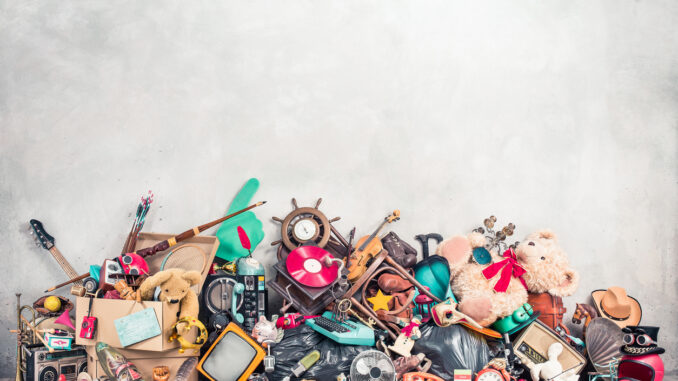
We can all acquire too much ‘stuff’ over time but some people struggle with being able to let go of any of their items
CREDIT: This is an edited version of an article that originally appeared on Mind
Hoarding is surprisingly common; it is estimated that 2-5% of the UK population is affected by it. People are often reluctant to accept that they have the condition and do not get the help that they need.
It can become a significant problem when clutter interferes with everyday living – such as being unable to go from room to room and even putting people’s safety at risk, or leading to them gradually becoming isolated.
Why do people hoard?
There is no one reason to hoard but it can result from mental health problems such as obsessive-compulsive disorder, depression or anxiety. It varies from person to person but, generally, it happens as a means of providing comfort to the affected person.
How to get help
If you, or someone you know, is suffering from this condition it is important to speak with your GP about the problem. Your GP can make a referral to your local NHS mental health provider and offer support available in your local area.
Online Resources
There are several online resources that offer information on hoarding:
- The NHS website
- Help for Hoarders
- Hoarding UK (a London-based charity)
Fast facts about hoarding, edited from Sorted and Styled
1. Hoarding starts with normal clutter – it’s one thing to always have a pile of mail on your kitchen counter or a messy bedroom cupboard. It’s another thing to store boxes in your oven!
2. Hoarders have good intentions – hoarders have the best of intentions and the worst follow-through. They’re always getting ready to do something, but they never get to it.”
3. Hoarding is often triggered by a major loss – the death of a loved one, divorce or another traumatic event can trigger hoarding.
4. Hoarders suffer serious consequences – filling a house with stuff makes for many health hazards.
5. Hoarding starts in adolescence – although it usually doesn’t manifest fully until adulthood, hoarding tendencies typically start during adolescence.
6. Hoarding differs from collecting – collectors usually keep their items displayed, organised and even wrapped and sealed, while hoarding is willy-nilly and all over the place.
7. Hoarding is its own mental illness – initially thought of as a subset of obsessive-compulsive disorder, hoarding now has a separate classification – ‘hoarding disorder’.
8. Hoarders become socially isolated – if a family member stops inviting you over to their home, it may be because they are embarrassed by their clutter.
9. Hoarding is not about monetary value – it’s never about the monetary worth or value of the item itself.
10. Overcoming hoarding requires therapy – aside from a temporarily cleaner home, hiring a crew to clear out a hoarder’s house will do nothing for the person in the long term.


Be the first to comment